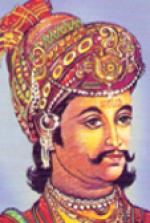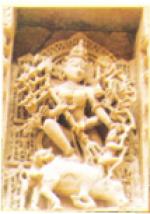Patan - The Ancient Capital of Gujarat
Patan became the first capital of this region after it came to be known as 'Gujarat.' After its foundation being laid in about 14th century, for nearly 650 years Patan retained its capital status almost constantly. Besides, it also became the center of culture. We find that there are a large number of Maths and Pathshalas on the border of Sahasralinga Lake. During the rule of Bhimdev I, Karnadev, Siddharaj and Kumarpal, it was at the apex of its glory. At that time Patan measured upto 30 km in its size, had 84 'chauta' and 84 'chowk'.It had a very large population as well.
The legend has it that Vanraj Chavda who was the founder of Gujarat's empire, had a shepherd friend from his younger days, and after him he named the capital as Anahilpur Patan. According to the traditional story, Vanraj Chavda laid the foundation of this cit~ at the place pointed out by Anahil, the shepherd, in V.S. 802 (AD 746, March 28 ). The young Vanraj had been in the care of his mother Rupsundari and maternal uncle Surpal after his father Raja laishikhari was killed in battle against Raja Bhuvad of Kalyan. Vanaraj surrounded himself by young braves and then laid the foundation of his capital Patan. From the rule of Vanraj Chavda the history of Rajput rule in Gujarat takes off. Even today we can see the image of Parasnath that was brought from Panchasar and installed in the Panchasara Parasnath Derasar (Jain temple) at Patan in his time. In one of its niches we see an old image of Vanraj himself. The golden age of Gujarat was achieved under the rule of Sidhhraj laisinh. We find great descriptions of this large metropolitan city of Patan in many books of the time that sing the praises of its beauty and prosperity as the capital of a wealthy empIre.
Patan during the Solanki period was full of numerous large mansions, temples and other architectural beauties. Today we can see some of their ruins. Recently the excavations have revealed the 'Rani ki Vav' that is a most amazing and beautiful structure, fullofwonderful architecture and sculpture. Builtby the Queen Udaymati, the wife of Bhimdev, it is the best example of such architecture for water wells that is peculiar to Gujarat. There are wonderful carved images in the niches of the walls of this multi-storied step-well. Besides this, we find many beautiful lain temples in Patan. Also, there are a large members of ancient manuscripts in these temples & private libraries also have many manuscript copies preseaved overtime. By the efforts of Mr. K. M. Munshi, a Hemchadra Memorial Center has come up here to look after this unusual and one of the most valuable treasures of India.
Patan has been made into a new District, with the city as its Headquarters. The world famous industry of weaving of 'patola' saris that flourished at one time here is about to be extinct, for only one family is keeping this art as a profession today. The other Sanskrit scholars that may have written many learned works when they taught and studied in the Sanskrit Pathshala next to Sahasralinga Lake, for we cannot find the works nor have we any memories of the scholars. The lain ascetics, besides the famous Hemchandra, such as Ranchandra, Gunachandra and many others knew the religious tenets deeply, and were commanding literary personalities as well. Their memories have been preserved in the works found in the libraries maintained at Patan. After Allauddin Khilji ransacked Patan, Ahmed Shah changed the capital and founded the new capital of Ahmedabad on the banks of River Sabarmati. This heralded the end of the importance and great glory that was Pata






No comments:
Post a Comment